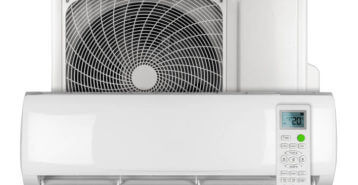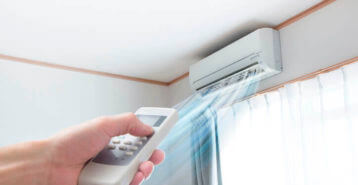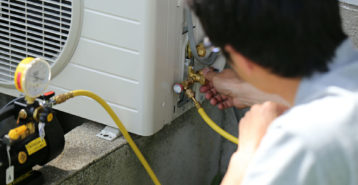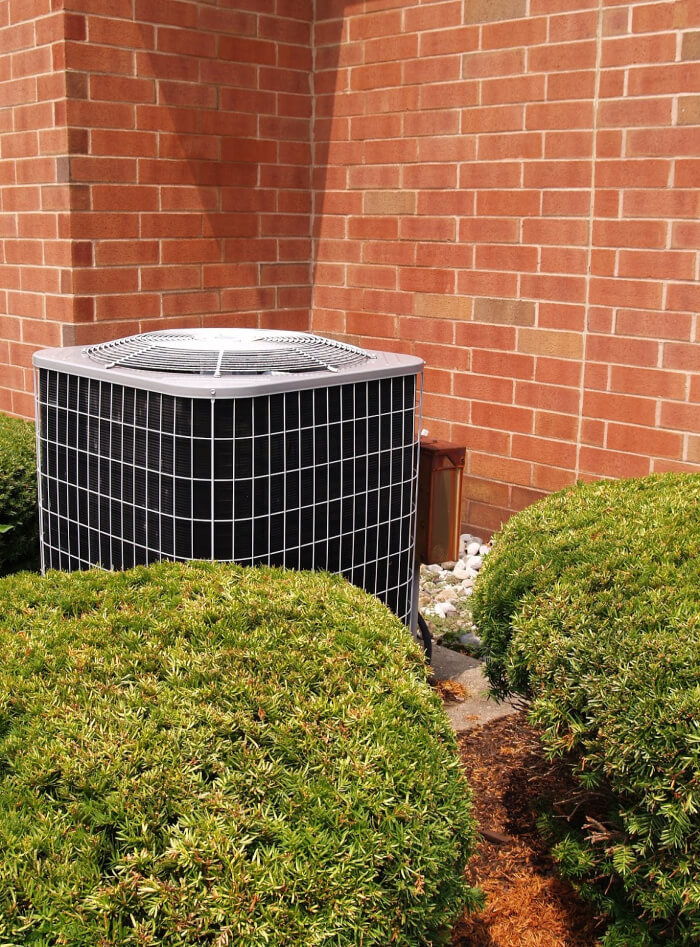What is a Multi Split AC System?
A multi split AC system is a ductless heating and cooling option for homes without ductwork. It’s also great for rooms that need individual temperature control. Instead of ducts, it uses a system of copper tubing to connect one outdoor compressor to multiple indoor air units. Each indoor unit runs independently, so you can set different temperatures in different rooms. This makes it a great option for zoned comfort and energy savings. Multi split systems are perfect for additions, sunrooms, garages, or any area of your home that needs personalized climate control without the need for costly ductwork.
Common Types of Split Air Conditioners
There are a few types of split systems to consider, depending on your needs:
- Mini Split AC System: Connects one indoor unit to one outdoor unit. Delivers a single temperature across the entire space it covers. Best for heating or cooling one room or zone.
- Multi Split AC System: Wondering how a multi split air conditioner works? It connects multiple indoor units to a single outdoor unit. Each room can have its own temperature setting and thermostat. Great for multi-room setups and larger homes needing room-by-room control.
- Single Split AC: Designed for small spaces like a sunroom or garage. It’s a basic option that cools or heats one room at a time.

Multi Split vs. Mini Split: What’s the Difference?
If you’re looking to cool a single room or multiple areas of your home without the need for ductwork, a ductless split air conditioner is a smart alternative to a traditional forced air system. Both mini and multi split systems offer ductless, energy-efficient comfort. The key difference is control:
- A mini split system maintains one temperature across the connected area.
- A multi split system lets you adjust temperatures independently in each room, thanks to separate thermostats.
A mini split system features one outdoor compressor and one indoor air handler, making it perfect for conditioning a single space with one consistent temperature. In contrast, a multi split system connects one outdoor unit to as many as five indoor units, each with its own thermostat. That means you can cool or heat multiple rooms at once, all with independent temperature control.
This flexibility helps reduce energy use and utility bills. Instead of cooling the entire house, you can focus on the rooms you’re using. Plus, multi split systems typically cost less overall than installing a full HVAC system with ductwork, especially in homes without existing vents.

Multi Split AC Installation: What to Expect
Are Multi-Zone Mini Splits Worth It?
A multi-zone split air conditioner offers smart, efficient cooling and heating for homes that need room-by-room control. Here are the benefits you can expect with this type of system:
- Flexible, Low-Impact Installation: Multi split systems are easier and faster to install than traditional central HVAC setups. They require less labor and no ductwork, making them ideal for older homes or room additions.
- Energy Savings: Because there’s no ductwork, there’s no energy loss through vents. In fact, according to Energy.gov, up to 30% of energy in a traditional system can be wasted through duct leaks, an issue you avoid entirely with ductless units.
- Space-Saving Design: Indoor air handlers are compact and discreet. Most mount flush to the wall or ceiling and blend easily with your décor, delivering comfort without taking up floor space.
Multi-zone systems let you heat or cool only the rooms you use, giving you better control over your energy use and monthly bills, all while keeping everyone in the house comfortable.
Choosing a Multi-Split Air Conditioner Unit
When shopping for a multi-split air conditioner, a few key factors will help you choose the most efficient system for your home and the best return on your investment.
- SEER Rating (Seasonal Energy Efficiency Ratio): The SEER rating tells you how efficiently a unit cools your home over an entire season. The higher the SEER, the more energy-efficient the unit. Look for systems with high SEER ratings to save on long-term energy costs.
- EER Rating (Energy Efficiency Ratio): EER measures the cooling efficiency of the unit at a specific outdoor temperature. A higher EER rating means better performance and less energy use per square foot cooled.
- BTUs (British Thermal Units): BTUs measure the cooling capacity of the unit. The larger the space, the more BTUs you’ll need. You can estimate the right size using our air conditioner size calculator or by asking your HVAC pro.
- ENERGY STAR® Certification: Systems with the ENERGY STAR label meet strict energy efficiency guidelines set by the EPA and U.S. Department of Energy. These units are designed to be cost-effective, energy-saving, and environmentally friendly.
While units with higher SEER, EER, and BTU ratings — and ENERGY STAR certification — may cost more upfront (ranging from $1,400 to $3,400 for single-zone systems and $1,700 to $3,600 for multi-zone systems), they pay off over time. Many homeowners see up to 30% savings on monthly cooling bills with a well-sized, high-efficiency ductless system.
Compare top-rated HVAC pros in your area.
Read real homeowner reviews, explore qualifications, and view promotions. Modernize makes it easy to browse professionals and find one that will be perfect for your project.









